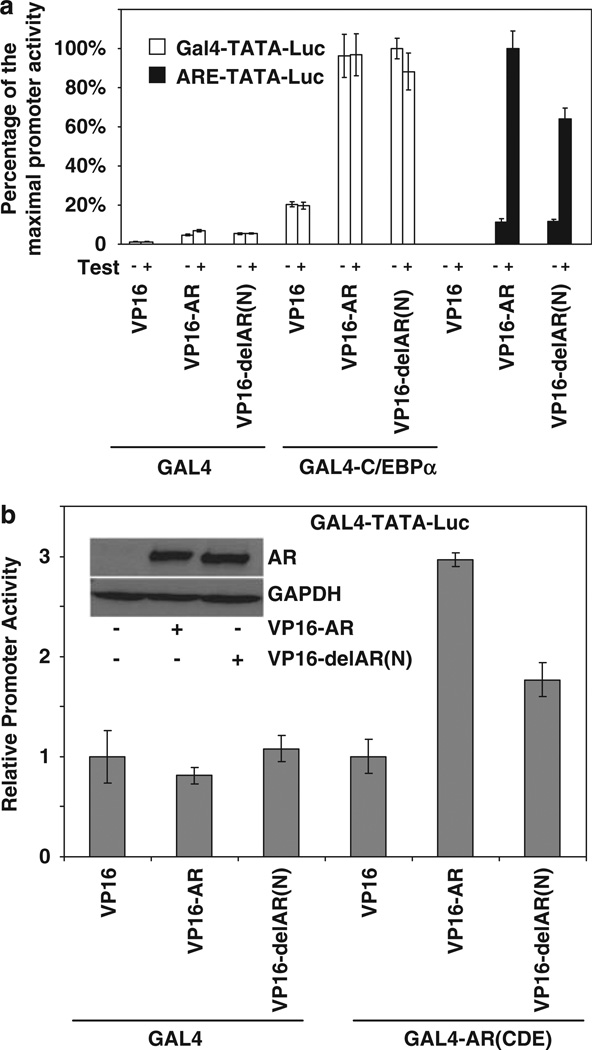Figure 5.
The effect of disrupting androgen receptor (AR) dimerization on the ability of CCAAT enhancer binding protein-a (C/EBPα) to recruit AR. (a) HeLa cells were transfected with GAL4-C/EBPα or Gal4 expression plasmid together with an expression plasmid for VP16, VP16-AR or VP16-delAR(N) (deletion of amino acids 1–37). The cells were co-transfected with either Gal4-TATA-Luc or ARE-TATA-Luc. The cells were treated with testosterone (10 nM) or vehicle for the duration of the transfection (48h) after which they were harvested for luciferase assays. The luciferase activities are plotted as the percentage of the maximal activity for each promoter construct. (b) HeLa cells were transfected with expression plasmid for Gal4 or GAL4 fused to AR containing only its CDE domains (GAL4-AR(CDE)) together with an expression plasmid for VP16, VP16-AR or VP16-delAR(N). The cells were co-transfected with either Gal4-TATA-Luc. The cells were treated with testosterone (10 nM) for the duration of the transfection (48h) after which they were harvested for luciferase assays. The western blot shows the relative levels of VP16-AR and VP16-delAR(N) probed with antibody to AR. For panels a and b, the P-values for the differences noted in the text were <0.001.

